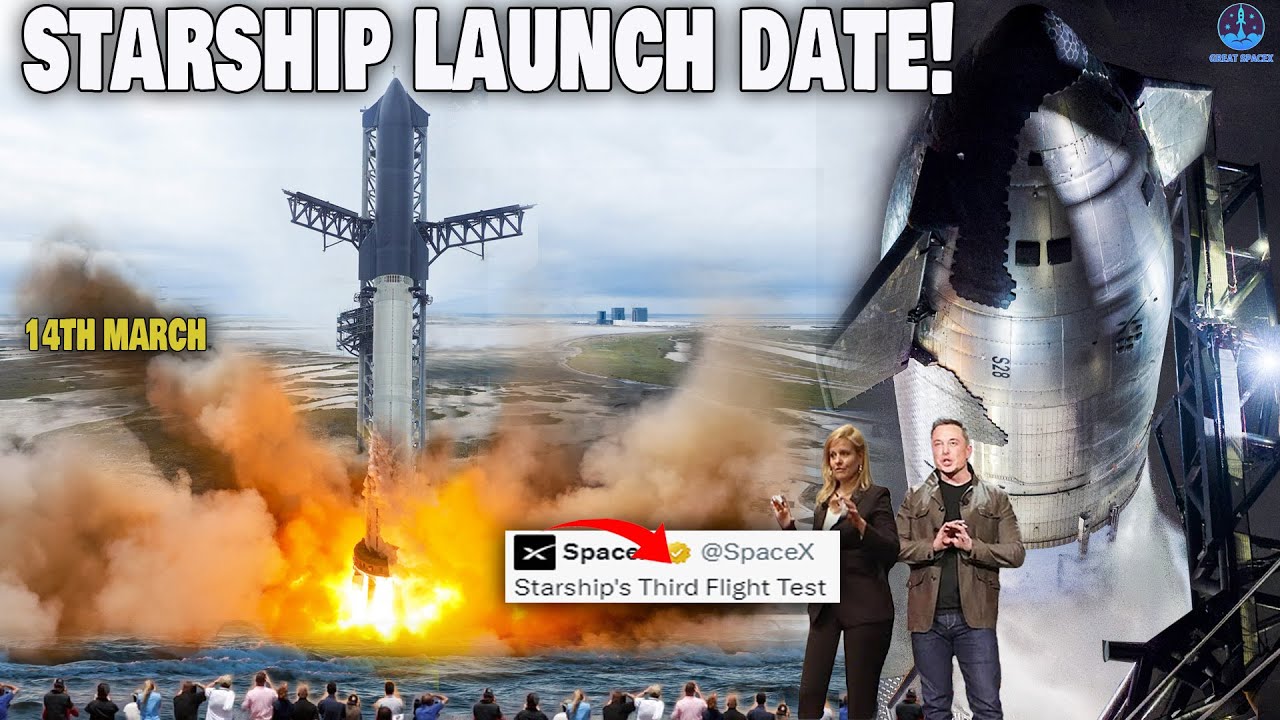
SpaceX has targeted March 14 for its third test flight of the Starship rocket, aiming to push the boundaries of space technology further. The event, anticipated to take place at the Starbase facility in Boca Chica, Texas, is a significant milestone in SpaceX’s journey to innovate and enhance space exploration capabilities. This test flight seeks to address previous challenges and implement new goals, including propellant transfer demonstrations and engine re-ignition in space, crucial for future deep-space missions.
Key Highlights:
- The launch is scheduled for 12:00 PM (UTC) on March 14, 2024.
- This test aims to demonstrate advanced capabilities such as payload door operation, in-space Raptor engine re-ignition, and propellant transfer within the Starship.
- Propellant transfer is vital for both SpaceX’s long-term goals and NASA’s Artemis program, aiming for sustainable lunar exploration.
- Previous tests provided valuable lessons, leading to significant modifications to prevent issues encountered during the second flight test.
- Regulatory approval from the Federal Aviation Administration (FAA) is pending, with SpaceX having completed a series of corrective actions following the investigation into the previous test flight.

Overview of the Test Flight
The third Starship test flight continues SpaceX’s tradition of iterative development, emphasizing real-world testing to refine and perfect its technology. The mission objectives include critical tests that will enhance the Starship’s operational capabilities, crucial for future missions to the Moon, Mars, and beyond. SpaceX aims to test the payload door functionality, a key feature for deploying satellites and other payloads into orbit. Additionally, the re-ignition of the Raptor engines in space and the demonstration of propellant transfer techniques are pivotal for the feasibility of long-duration spaceflights and interplanetary missions.
Previous Lessons and Corrective Actions
The second flight test of Starship offered SpaceX valuable insights, identifying areas for improvement to ensure the success of future launches. One significant issue was the energetic failure of one of the Raptor engines on the Super Heavy booster, attributed to filter blockage. SpaceX has since made hardware modifications to enhance propellant filtration capabilities and refined operations to increase the reliability of future flights.
Regulatory Approval Process
SpaceX is in the final stages of obtaining the necessary regulatory approval from the FAA. This involves completing a set of corrective actions identified from the previous launch’s investigation. The process echoes the approach taken before the second flight test, with SpaceX demonstrating readiness while awaiting formal approval. The anticipated March 14 launch date reflects SpaceX’s confidence in meeting these requirements and advancing towards its ambitious goals for space exploration.
For those interested in witnessing this milestone in space exploration, SpaceX plans to livestream the event, offering a global audience the opportunity to partake in this exciting venture into the future of space travel.
This test flight represents another step forward in SpaceX’s quest to revolutionize space travel, aiming to make interplanetary exploration more feasible and sustainable. With each test, SpaceX edges closer to its vision of enabling human life on Mars and beyond, marking significant advancements in space technology and exploration.


















